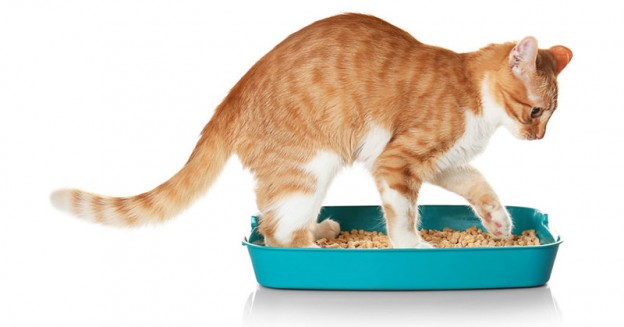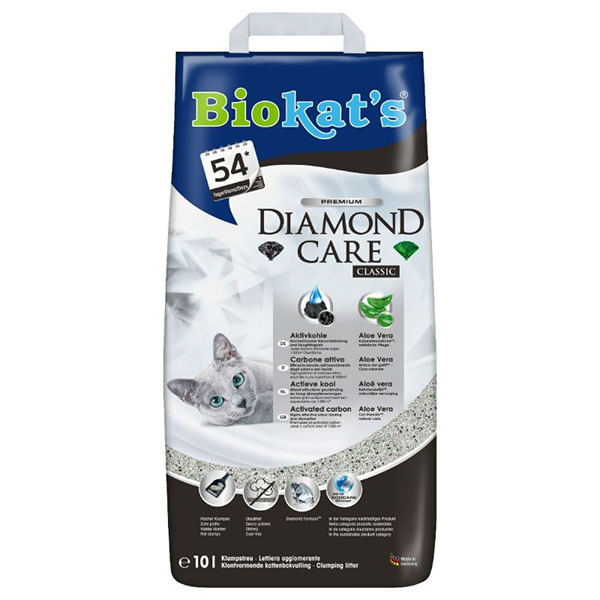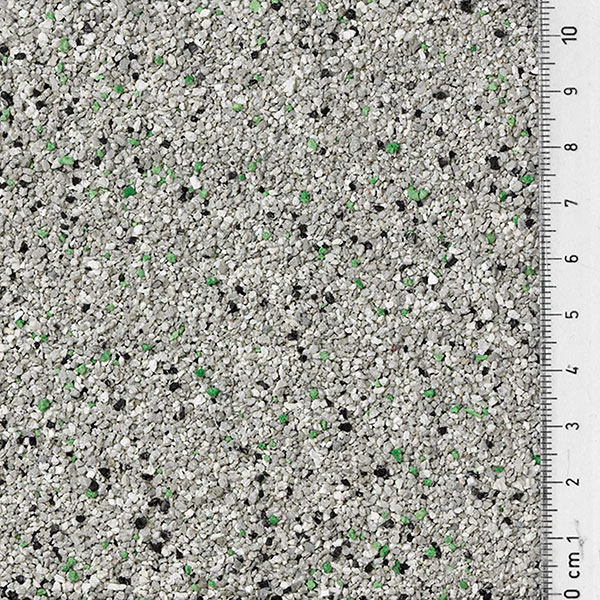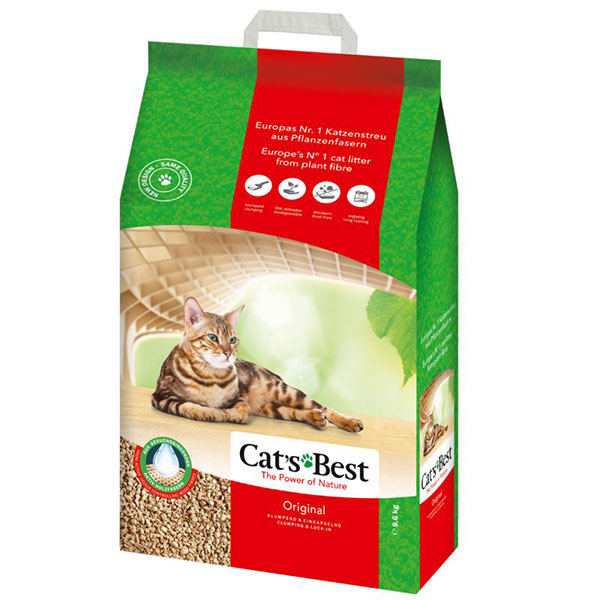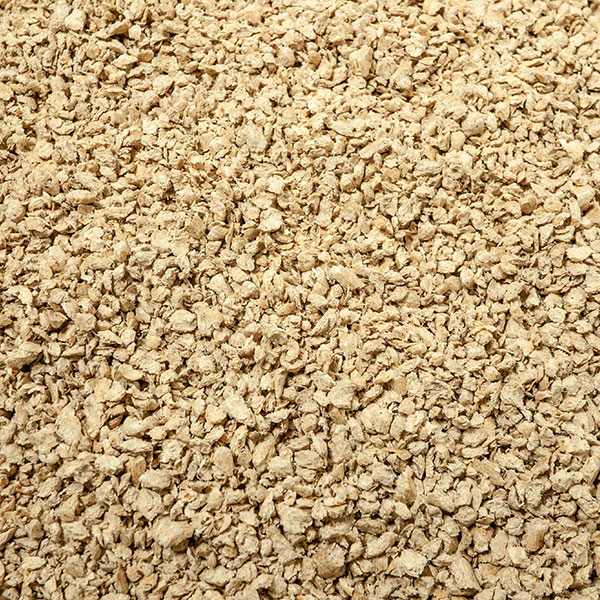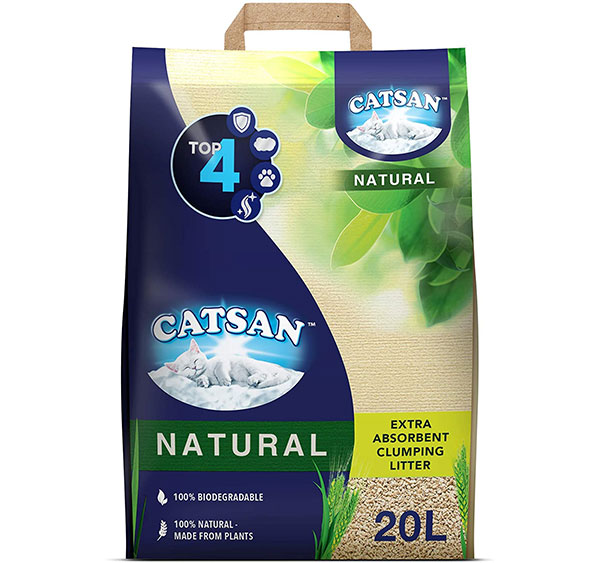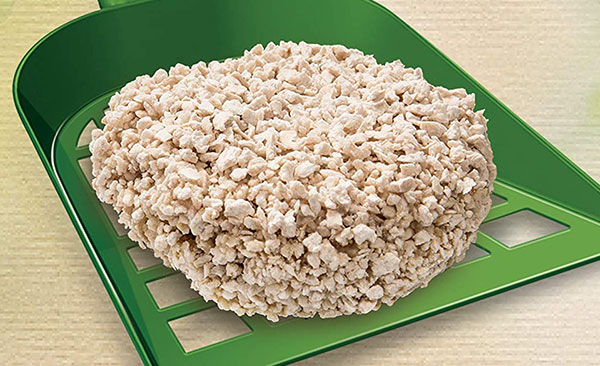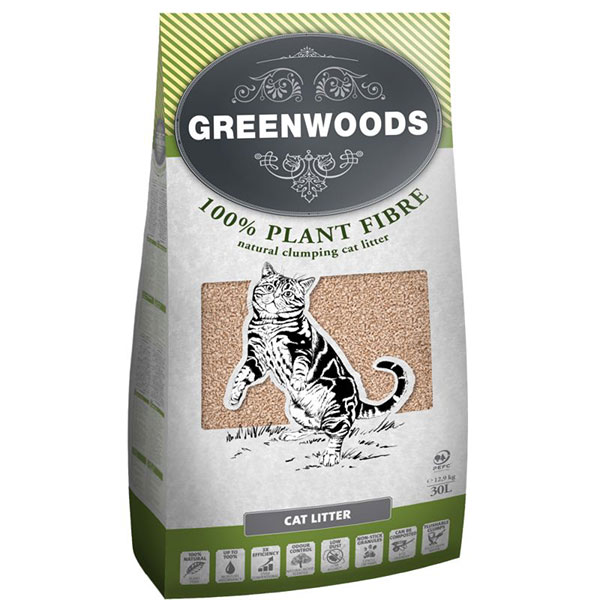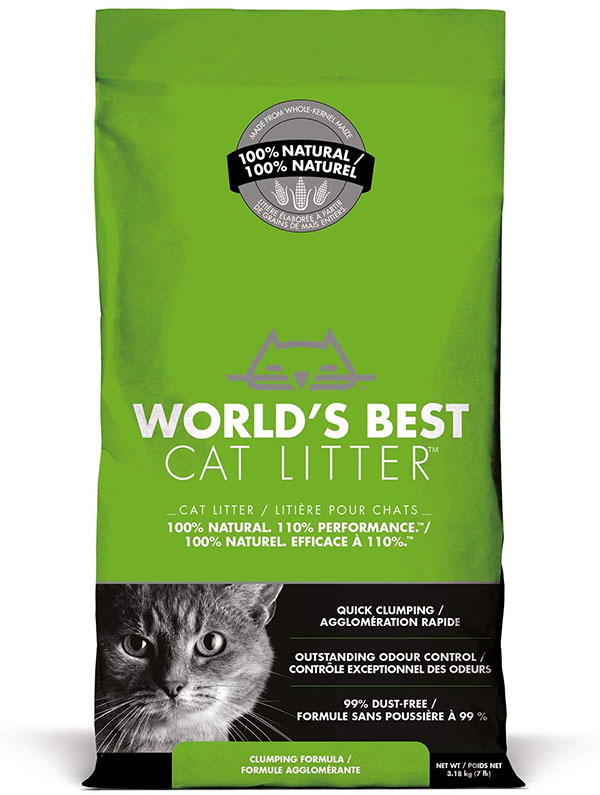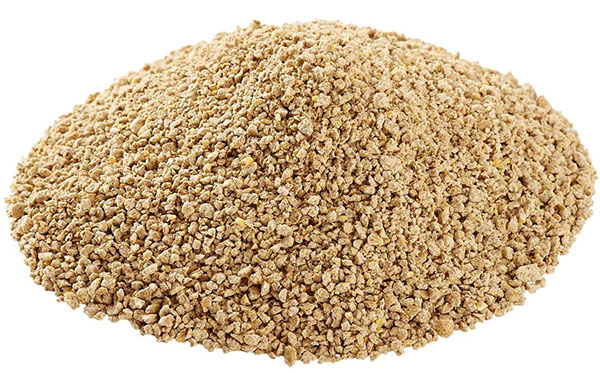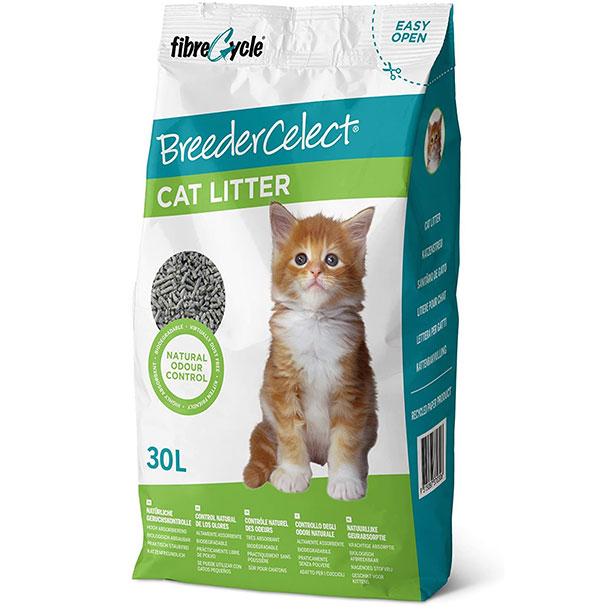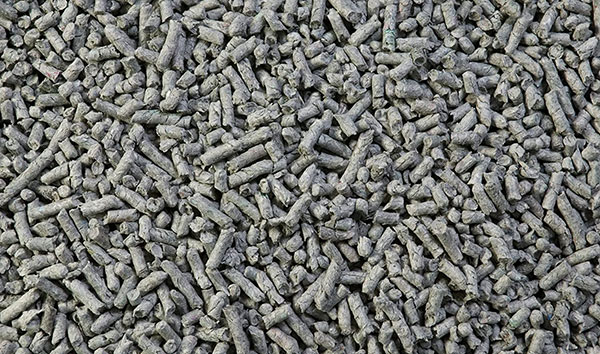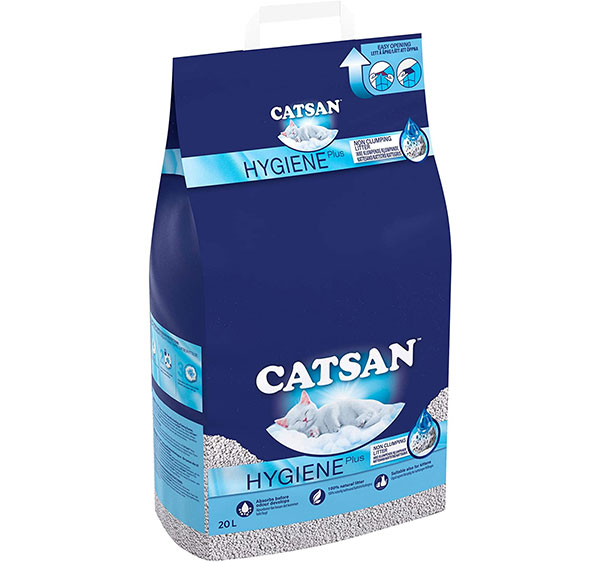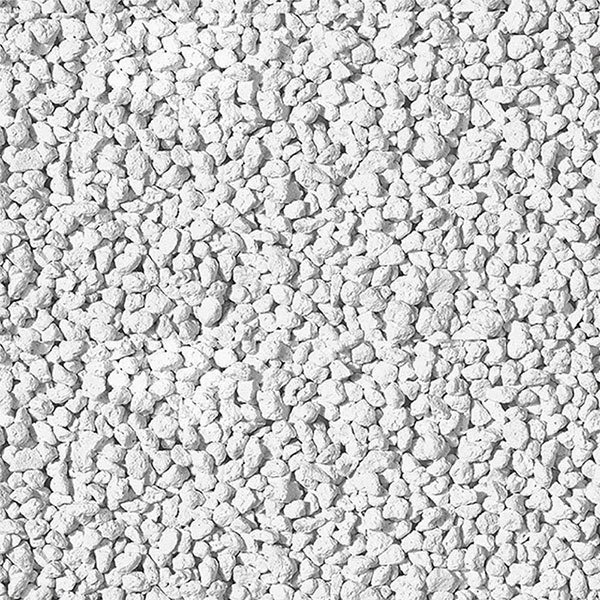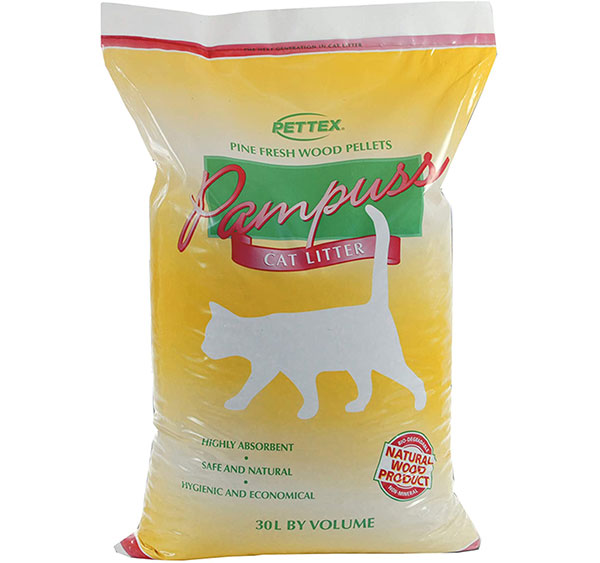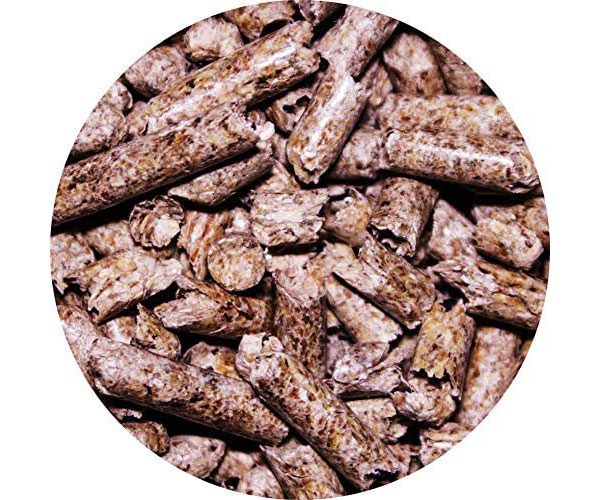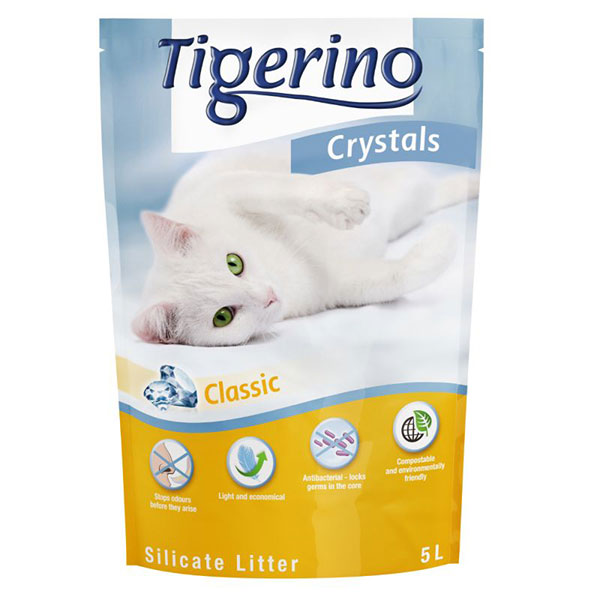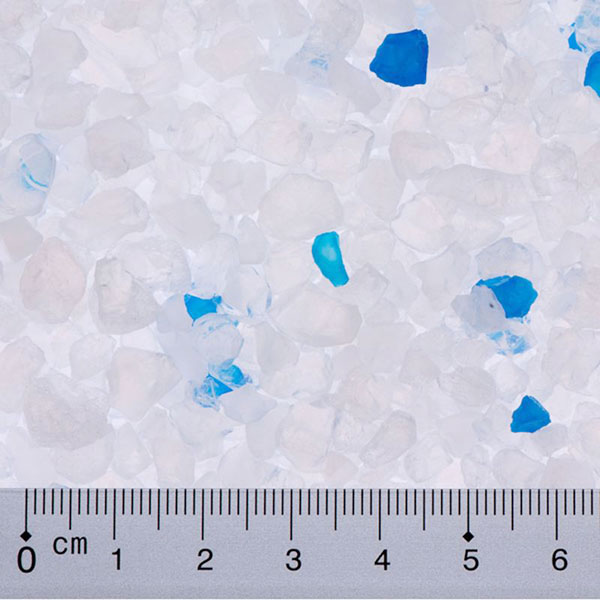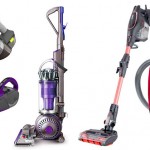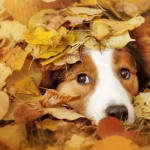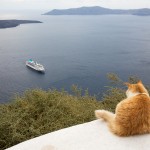Last updated: July 29th, 2023
Cat litter is one of the most important items you’ll buy for your cat, but one that is often not given much thought. Cats are very clean creatures, and providing them with a suitable cat litter is vital for their health and happiness. Anything that disturbs their toilet habits can cause stress, and even illness, which leads to an unhappy cat and possibly messy “accidents”.
At Pet Money Saver, our primary goal is to help you find the cheapest deals for cat food. However as we all know, what goes in one end eventually comes out the other. Buying cat litter is a necessity for most cat owners, but how much research have you done to find out what the best cat litter is for your cat? There are so many different brands and types of litter, each with their own pros and cons – how do you choose which one to buy?
It’s not a very exciting subject, so we’ve done the research for you – looking at why cats use litter, what it’s made of, how often to change it and many other questions. We also look at how to reduce the environmental impact of your cat’s waste by using eco-friendly cat litter.
We’ve also reviewed many of the different cat litters available for sale in the UK, and have selected our favourites based on quality and price as well as personal experience trying out many of the brands we have reviewed. But first, let’s explore a bit more about cat litter, or if you’d prefer you can jump right ahead to our reviews of the best cat litter available to buy in the UK.
Contents
Why Use Cat Litter?
Cat Litter Buying Guide
What is Cat Litter Made of?
Eco-Friendly Cat Litter
Best Clumping Cat Litter Review
Best Non-Clumping Cat Litter Review
Why Use Cat Litter?
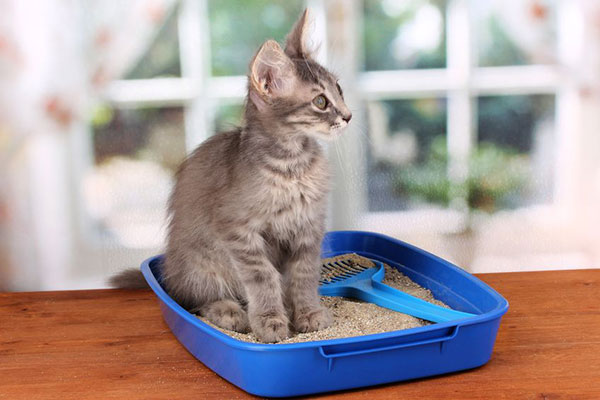
Cats naturally want to bury their waste in litter
Cats are generally very clean animals, and this instinct for hygiene is with them from birth. In the wild, cats will naturally try to bury their waste neatly – usually under sand or dirt. The reason for this is two-fold. Firstly, cats use their urine and faeces to mark their territory, and more submissive cats will bury their waste so that the more dominant cats do not feel challenged. Your cat buries their waste partly as a way to say that he or she recognises you as the dominant cat of the house. The main reason however is to avoid any unwanted attention from potential predators in the wild. Burying their waste hides their smell, and keeps them safe from being discovered.
Cat litter helps them follow their natural instincts, and do the same when they are living inside our homes.
How Many Litter Trays Should I Have?
The general rule of thumb for indoor cats is to have 1 litter tray per cat, plus one spare (so 3 litter trays if you have 2 cats).
Where Should a Litter Tray Go?
Cats can be quite picky about where they go to the toilet and like their privacy, so you should place their litter box in a quiet place of your house that is protected and out of sight. The tray should never be placed anywhere near their food or water bowls, or where they like to sleep. This is quite reasonable really – would you enjoy having a toilet next to your bed or in the kitchen?
Some cats like the extra privacy of a covered litter tray, while others prefer it to be open.
While cats are clean animals, accidents can happen so it’s best to place the litter tray on an easy to clean floor that can be wiped clean if necessary.
If you put the tray in a room with under floor heating then you might want to put something insulating, such as a foam board, between the floor and the tray, to prevent the warmth causing bacterial growth and causing an unpleasant smell.
How Much Litter Should be in the Tray?
For most cat litters, it’s recommended to fill the litter tray to a depth of around 5-7cm (2-3 inches). This may vary slightly depending on the type of litter, but usually the packaging will advise how much to use.
There should be sufficient litter in the tray for your cat to bury their poop, and to absorb their urine to prevent it pooling on the bottom of the tray.
How Often to Change Cat Litter?
If you’re using non-clumping litter, remove solid waste every day, and replace the litter every 4-5 days/weekly.
For clumping litter, remove solids and clumps daily, and replace with the same amount of litter you’ve removed. The litter doesn’t need to be fully replaced as often as non-clumping litter, but it’s still a good idea to do this every so often – usually it’s best to do this every month.
How to Clean the Litter Tray?
When you replace the litter, it’s a good idea to give the tray a good clean too. Use hot water and a neutral detergent without any strong smells. Cats have a sensitive sense of smell, so any cleaning product with a strong chemical smell is likely to put them off. Also avoid any cleaning products containing vinegar additives. This is because vinegar additives smell very similar to cat urine, and will cause your cat to avoid the tray. If you use a disinfectant, ensure you use one that doesn’t include Phenol (Carbolic Acid), as this is very toxic for cats.
How to Dispose of Cat Litter?
The best way to dispose of cat litter is to scoop it into a biodegradable poop bag, and then place in your normal household bin, or a cat litter bin.
You should not flush cat litter or cat poop down the toilet, even if the litter is advertised as being flushable.
You can read more in our blog posts about the best way to dispose of cat litter, and why not to flush cat litter.
What Litter is Best for your Cat?
If you have recently got a new cat or kitten, they will likely be used to one particular type or brand of litter, so it’s often best to continue with what they are used to – at least initially. If you’ve recently adopted or bought a cat or kitten then check with their previous carer to find out what type of litter they are used to.
The best litter for your cat depends on a number of factors, including whether your cat has long or short hair, if they have sensitive paws or any any allergies, your budget, and how much time you have to keep their litter tray clean.
Sometimes though, it may take a bit of trial and error to find the most suitable litter for them as they may not like the brand that you first choose. One suggestion is to provide them with different types of litter in separate trays and see which they prefer. Some litters are available in smaller trial packs, which is a great way of trying a selection without having to buy the more expensive larger bags.
Another tip is when changing litter type, you should also introduce it slowly by adding it to the previous litter little by little, rather than replacing it all in one go.
What is the Best Cat Litter for Kittens?
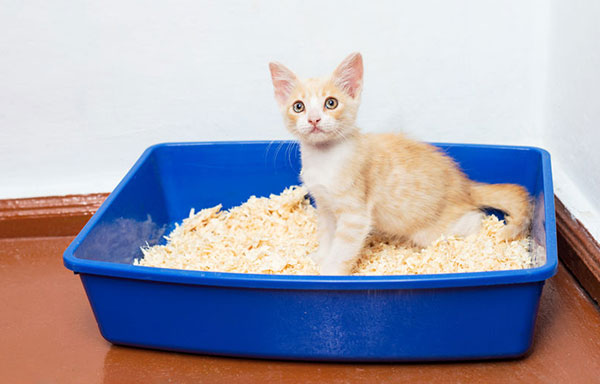
What is the best cat litter for kittens?
In general, all good quality cat litter is suitable for kittens, however it’s recommended to avoid clumping kitty litter during the first few months of their life as it can be swallowed. This could lead to dangerous internal obstructions.
Cat Litter Buying Guide
There are a few things to consider when choosing your cat’s litter.
Clumping or Non-Clumping
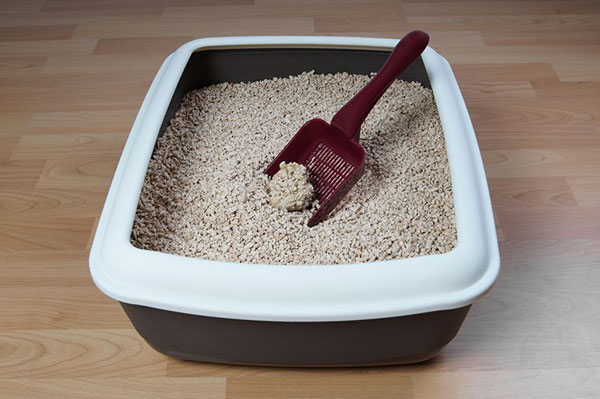
Clumping cat litter
This is a matter of preference for you and your cat. Clumping litter typically is made from material that soaks up liquids to form solid clumps when wet. These clumps are easily removed as one, and this means you don’t need to fully replace the litter as often as with non-clumping. This type of litter is more efficient, as it saves you time and money.
With non-clumping litter, the individual granules absorb the liquid without forming clumps. This requires more frequent refreshing of the whole tray.
Non-Clumping litters are also more likely to be biodegradable.
Size and Texture
Your cat will walk on the litter to go to the toilet, and also scratch it after they’ve finished to try and bury their waste, so it’s important to get a litter that is soft on their paws. Some cats have more sensitive paw pads than others, so in this case you’ll need a litter that is softer to the touch.
The texture of the litter will depend on what it’s made from, and different cats will have their own preferences for which they prefer. Unfortunately, finding out which is their favourite is often a case of trial and error.
The size of litter granules ranges from very small clay granules to much larger wood or paper pellets. The larger sizes will not get tracked outside of the litter box as much as the small granules, and are more suited to cats with longer hair, as they won’t tend to stick to their fur.
Smell
No one likes a smelly cat litter tray – your cat included. The nasty smells don’t come from the urine itself, but rather from the ammonia that is released when bacteria decomposes the urine. A cat litter with good odour control will soak up the liquid quickly, and lock it in so the unpleasant smell doesn’t have time to develop.
It’s not only us humans that find this odour unpleasant – cats have a very sensitive sense of smell, and don’t like it either. If their tray smells dirty, it can cause them to go to the toilet elsewhere.
Some cat litters have added fragrances, such as pine, to hide the unpleasant smells. However while these smells might be attractive to us humans, they don’t have the same effect on cats and could put them off. Just think how it feels to go into a room where someone has sprayed a really strong perfume – it can be rather unpleasant and overbearing. This is how it would feel to a cat, who has a much more sensitive sense of smell compared to us humans. Cats also mark their territory with their scent, so by masking it with artificial smells this could also put them off using the tray.
Certain litters also contain an ingredient called activated carbon, which absorbs bad smells naturally without adding any artificial fragrances.
What is Cat Litter Made of?
Cat litter can be made from a variety of different materials, and each has its own characteristics.
Clay
Clay is the most traditional and popular material for cat litter, and it can be either non-clumping or clumping.
Non-clumping clay is good at absorbing liquids, however it doesn’t clump together. Once it is soiled, it can become smelly and requires regular cleaning. However as it doesn’t clump, you need to change the entire litter tray instead of just scooping out the used litter.
Clumping cat litter is usually made from sodium bentonite clay, which allows the clay to clump when wet – expanding up to 15 times its size.
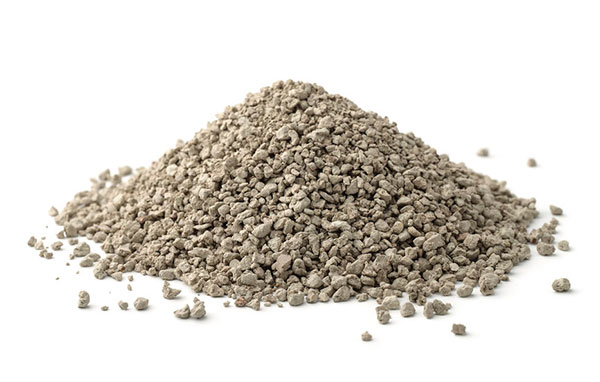
Clay cat litter is formed of small clay granules
Clay litters are more prone to producing fine dust which can cause irritation or an allergic reaction, and if your cat ingests clumping clay litter, it can cause an internal blockage. This however is very rare, and only likely to be an issue if your kitten or cat starts to eat the litter. Wet clay granules can also get caught in your cat’s paws, between their pads which can be uncomfortable for them.
The biggest disadvantage of clay litter though is that it isn’t very green. The process to extract the clay (called strip mining) is not environmentally friendly at all and leads to deforestation, loss of wildlife habitat and pollution to name but a few. Clay cat litter also isn’t biodegradable or compostable either so just ends up in landfill until the end of time.
Clay litters are also relatively heavy for a certain volume, so larger bags of litter can be heavier to lift.
Plant Based
Another eco-friendly cat litter material is plant-based materials such as corn. These can be very effective litters, and are sustainable and biodegradable too. The only real downsides are theat they don’t always clump as well as clays, and can be a little more expensive. However if you want to minimise your impact on the environment they are a very good choice.
Recycled Paper
This is a much more eco-friendly material for cat litter, as it is made from recycled paper that is formed into little pellets. Paper litter behaves in a similar way to wood litter, and is very effective at soaking up liquids. It’s also biodegradable and compostable, so makes it a very eco-friendly option.
Paper litters also tend to be more absorbent than traditional litters, have a soft texture and are also ideal for long hair cats, as the larger pellets don’t get stuck to their fur as much as smaller litter granules.
One downside is that these litters don’t tend to clump, and require more frequent cleaning than most other litters.
Silica
Silica is a natural mineral that is naturally absorbent – it’s what you get in those little sachets that keep items dry during transit. This makes it a good material for cat litter as it absorbs urine quickly, staying fresher for longer. It can absorb up to 40 times its weight in moisture, making it the highest absorbency of all cat litter materials. It also means it doesn’t need changing so often.
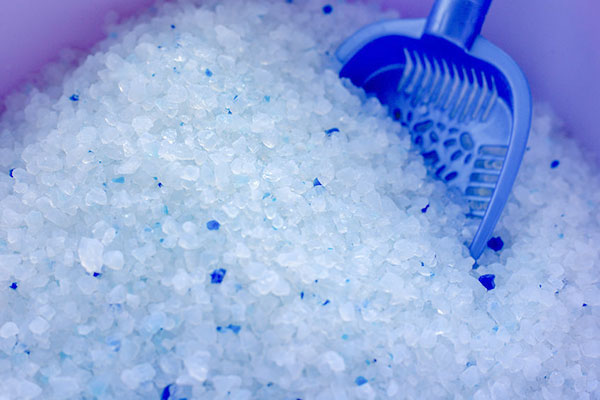
Silica cat litter
The downsides of silica cat litter are that similar to clay litter, it isn’t very eco-friendly. There is a heavy environmental cost associated with mining the raw materials, then producing and transporting the final product. It also doesn’t biodegrade, meaning once you dispose of it, it will end up in landfill. Silica is also a known carcinogen when inhaled. Also it can be quite sharp and uncomfortable on your cat’s paws, especially if they have sensitive pads.
Wood
Wood litters (including pine) are usually sold in pellet form, but also are available as shavings and sawdust. These litters produce relatively small amounts of dust, and also help reduce the smell without requiring any artificial additives. Some wood litters give a nice fresh woodland scent.
Wood pellets are quite large compared to other types of litter, so may take a bit of time for your cat to get used to if they’ve not used it before. This also makes this ideal for long-haired cats, as the pellets are less likely to stick to their fur.
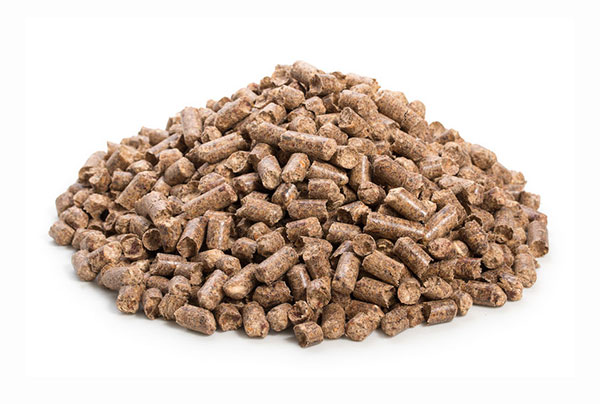
A typical wood pellet cat litter
Although some wood litters do clump, they tend to be a bit mushier than clay clumping litters, so can break up if you’re not careful when disposing of the used litter.
One key benefit of these litters are that they are made from sustainable renewable materials, and are also biodegradable and compostable.
Eco-Friendly Cat Litter
With the most popular cat litter materials being bad for the environment, how can you best provide your cat with a suitable litter, and also help be more ecologically friendly? The key things to look for in a green cat litter are:
- Biodegradable
- Eco-friendly packaging
- Renewable
- Sustainable
- Toxin-Free
Fortunately, there are an ever increasing number of eco-friendly alternatives to the traditional clay and silica cat litters, and we have reviewed some of these below. These are made from materials such as recycled paper, plant-based materials and wood.
Best Clumping Cat Litter
Biokat’s Diamond Care Classic Cat Litter
Biokat’s Diamond Care Classic cat litter is a clumping litter made from natural clay. It also includes activated carbon produced from coconut shells (a renewable resource) for odour control. Activated carbon is a highly porous substance, and odour substances are strongly attracted to the carbon molecules. This makes it very effective at removing smells.
This litter also has added Aloe Vera, which help make this more gentle on your cat’s paws. The granules are small, produce very little dust, and based on a number of customer reviews it clumps very well.
There are several different varieties of this litter, some with added scent, however the Classic version we’ve reviewed doesn’t have any artificial fragrance added. This is preferred by most cats, as the artificial fragrances added to litters can often be off-putting to cats who have a much more sensitive sense of smell than us.
This brand of litter is especially good if you’re looking for an eco-friendly product. BioKat’s were awarded the ECOCARE award in 2012 for their work in sustainability.
Although this is a clay litter, which is not a particularly eco-friendly product, Biokat’s use 100% natural clay sourced from open-mine casts in Bavaria (Germany). The litters are also produced in Germany, meaning shorter transport routes and lower emissions. So if you’re keen to use a clay clumping litter, then this one appears to be less damaging to the environment than other brands. Like all clay litters though, this one isn’t biodegradable.
- Material: Bentonite clay
- Scented: No
- Environmental Impact: Not Biodegradable, Reduced transport emissions
- Price: £8 (10L)
- Weight: 0.86 kg/L
Cat’s Best Original Cat Litter
This original cat litter from Cat’s Best is another wood-based litter, made from secondary raw wood materials from the woodworking industry. This means that no trees are chopped down to make Cat’s Best litter.
This litter is made 100% from renewable raw materials, meaning it is sustainable, and it is also biodegradable too. It’s entirely natural, and doesn’t contain any chemical additives or fragrances.
In our own experience, the wood fibres absorb moisture and smells effectively, and if you remove and solid waste and clumps regularly, you won’t need to refresh the whole tray for up to 7 weeks. The wooden granules aren’t that big though, so can be tracked by your cat outside the box more than the bigger pellets, but not really significantly more than other litters.
This litter’s green credentials are good too – not only is it made from a sustainable source, it is fully biodegradable and even the paper packaging is recyclable as well. Similar to the Greenwoods natural litter, this claims to be flushable down the toilet however we wouldn’t recommend that in the UK.
Cat’s Best also produce a litter in pellet form using the same wood fibres. Due to the larger size and smooth surface of the pellets, they are less likely to stick to your cat’s fur or paws. This reduces the problem of litter being tracked outside the tray. However this does mean they don’t clump quite as well as the granules.
- Material: Wood-based
- Scented: No
- Environmental Impact: Renewable, Biodegradable, Compostable
- Price: £14 (20L)
- Weight: 0.43 kg/L
Catsan Natural Biodegradable Clumping Cat Litter
Catsan’s clay clumping litter is one of the most popular litters on the market, however these days it’s important to look at more eco-friendly options, and their Natural Biodegradable clumping litter is a great alternative.
It’s made from a by-product of wheat-milling that would otherwise have gone to waste, so no plants were grown and harvested just to make this litter. It’s 100% natural, sustainable and also biodegradable so is ideal for pet owners who want to minimise their environmental impact. As an added bonus, the paper packaging is also recyclable as well.
The litter clumps well, and the natural materials are effective at absorbing odours too. Due to the natural plant-based materials, it’s also softer on your cat’s paws.
Another advantage of this litter over clay litters is that it is lighter, so for the same volume is easier to carry and pour – no more bad backs from lifting heavy sacks of clay litter!
- Material: Plant fibres
- Scented: No
- Environmental Impact: Renewable, Biodegradable, Compostable
- Price: £21 (20L)
- Weight: 0.55 kg/L
Greenwoods Plant Fibre Natural Clumping Litter
This natural clumping litter from Greenwoods is made from 100% natural, renewable plant fibres with no chemical additives which makes it very eco-friendly. It can absorb up to 7 times its weight in liquid, which makes it around 3 times more efficient than traditional cat litter.
Because it’s made from natural wood-based plant fibres, it has a fresh woody scent and is gentle on your cat’s paws. It doesn’t contain any artificial fragrances either, so is also gentle on your cat’s nose.
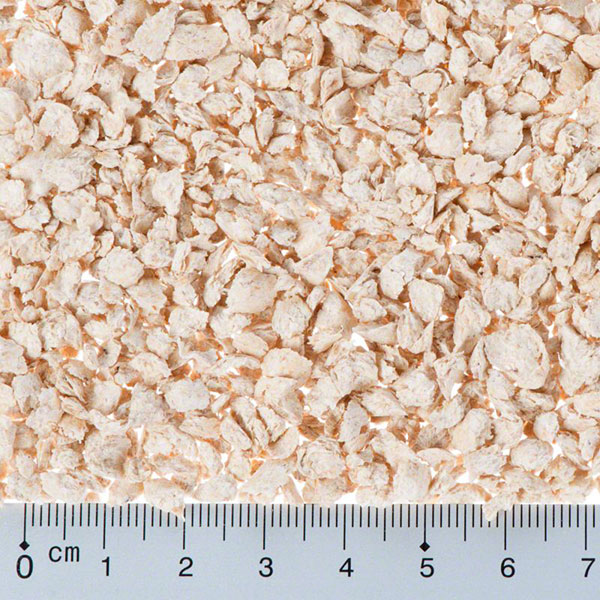
Greenwoods Natural Clumping Cat Litter
Low in dust, and light in weight it comes highly recommended if you’re looking for an effective and convenient litter that is also environmentally friendly. It’s compostable too, and is also advertised as being flushable, however we wouldn’t really recommend that.
- Material: Wood-based
- Scented: No
- Environmental Impact: Renewable, Biodegradable, Compostable
- Price: £18 (30L)
- Weight: 0.43 kg/L
World’s Best Cat Litter
Calling your cat litter brand World’s Best is quite a bold thing to do, so does this World’s Best Cat Litter litter live up to the name?
This particular litter is made from sustainable whole-kernel corn, which is compressed into concentrated granules. It’s 100% natural, with no additional chemicals, so is eco-friendly too.
It’s claimed to be 99% dust free, and doesn’t contain the silica dust that less environmentally friendly litters do, thus is safer for you and your cat.
Corn is a great material to use for cat litter, as its naturally microporous structure makes it especially good at absorbing liquids and smells. It clumps well for easy cleaning, and also controls smells very effectively. It’s also advertised as being flushable down the toilet, however we’d advise you don’t do this in the UK.
For a similar sized bag of litter, it’s a fair bit lighter than clay litters, however not as lightweight as the wood-based litters we have reviewed.
It’s rather expensive compared to some litters we’ve looked at, but gets great reviews and many people do think it lives up to its name. If you have more than a couple of cats, they also sell an Extra-Strength version with a natural plant ingredient added for extra odour control.
- Material: Whole-kernel corn
- Scented: No
- Environmental Impact: Renewable, Biodegradable, Compostable
- Price: £30 (13kg)
- Weight: 0.6 kg/L
Best Non-Clumping Cat Litter
Breeder Celect Cat Litter
Breeder Celect cat litter is a non-clumping litter made here in the UK from over 99% recycled paper, and is in the form of compressed cylindrical pellets.
Being made from paper, it is virtually dust free, soft under your cat’s paws and is also very absorbent. It doesn’t contain any chemical additives or fragrances either. It’s lightweight too – being the lightest per litre of any litters we’ve reviewed. This makes it easier to pour, but also means your cat might drag more of this out than other heavier litters.
Unlike some wood pellet litters that become soggy and break up easily when wet, these pellets do a much better job at staying solid making them easier to scoop up when used.
Because it’s made in the UK, there are less emissions created to transport it, adding to its green credentials. It’s also biodegradable, as is the outer packaging, making it a very eco-friendly cat litter.
- Material: Recycled paper
- Scented: No
- Environmental Impact: Recycled, Biodegradable, Compostable, Reduced transport emissions
- Price: £14 (30L)
- Weight: 0.3 kg/L
Catsan Hygiene Litter
Catsan’s Hygiene cat litter is made from natural minerals (quartz sand and chalk), and is probably one of the most recognised cat litters around as it’s available for sale almost everywhere.
It doesn’t have any artificial scents or colours, and also produces very little dust.
It’s a very popular litter, partly due to the cost as it’s relatively cheap, although it does have some downsides. Firstly it doesn’t clump, meaning you have to replace the whole tray regularly. Secondly it’s not biodegradable so loses out on the eco-friendly side of things. On the plus side though, the packaging is recyclable.
One of the advantages of this litter though is that it is good for helping to check if your cat is suffering from any health issues, as the white colour of the granules help you identify any changes in your cat’s urine – for example if it there is any blood.
- Material: Minerals (quartz sand and chalk)
- Scented: No
- Environmental Impact: Not Biodegradable
- Price: £11 (20L)
- Weight: 0.49 kg/L
Pettex Pampuss Cat Litter
This wood based cat litter from Pettex is one of the best-selling cat litters on the market, and is also one of the cheapest. It’s made from 100% biodegradable residue wood material, with no additives or glue. Pettex are a UK-based family run business who have been trading since 1959, so if buying British is important to you then this is a great choice.
It doesn’t have any artificial scents, but instead its natural pine scent will help mask any unpleasant smells.
It’s highlight absorbent, lightweight and easy to handle, and also very low in dust. Due to the larger size of the pellets, they don’t stray too far from the tray.
Being made in the UK adds to its green credentials, as this means lower transport emissions compared to imported litters. It’s also biodegradable and compostable too.
- Material: Recycled wood
- Scented: No
- Environmental Impact: Recycled, Biodegradable, Compostable, Reduced transport emissions
- Price: £11.50 (30L)
- Weight: 0.3 kg/L
Tigerino Crystals Silicate Cat Litter
This review wouldn’t be complete without a silicate cat litter, and this one from Tigerino has several things going for it.
Its highly absorbent of liquids and odours, and low on dust too. It’s also lighter in weight compared to clay litters, making it easier to carry and pour.
There are a few downsides with this material though. Firstly it’s not very eco-friendly both in the way it is produced, and also how it is disposed. Although it’s claimed this litter can be disposed of in your compost heap, silicate doesn’t decompose so it’s not biodegradable.
The crystals can be a little sharp too, so not ideal if your pet has sensitive paws.
Tigerino sell a few different versions of this litter, however we recommend the Sensitive (previously known as Classic) as the others are scented. You can also buy an XXL version with larger crystals.
- Material: Silicate
- Scented: No
- Environmental Impact: Not Biodegradable
- Price: £4 (5L)
- Weight: 0.4 kg/L

